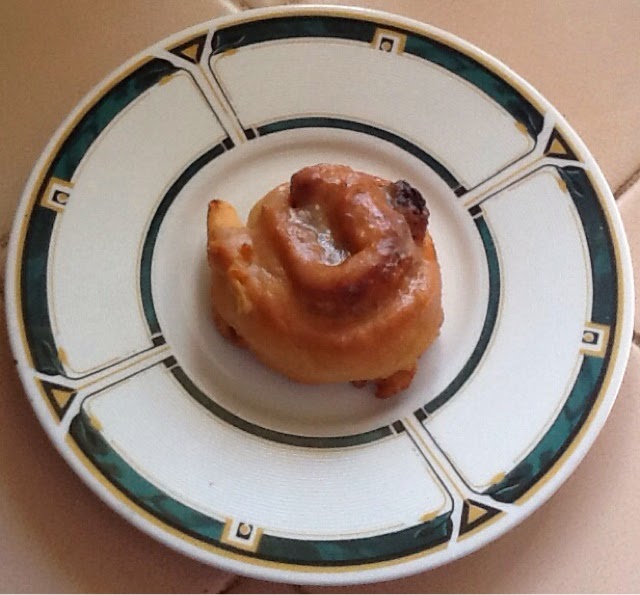I made some pudding snail buns in 2013, but I wasn't too impressed with them. I prefer the raisin-marzipan snail buns I remember from my childhood. So here's one version of it.
The dough used here is a very traditional German dough, a Quark-Oel (Greek yoghurt-vegetable oil) dough. It's consistency is similar to a yeast dough, but it doesn't contain yeast, so no rising time is necessary. Instead, the dough contains baking powder and can be used immediately after mixing. This Quark-Oel dough is considered the yeast dough for impatient people. However, you can certainly make the yeast dough I described in the pudding snail recipe.
Ingredients:
Baking sheet
Parchment paper
Dough:
150 g all-purpose flour
4 leveled teaspoons baking powder
75 g Greek yoghurt (Fage or Chobani brand)
50 ml milk
50 ml vegetable oil
40 g sugar
1 package vanilla sugar or some vanilla extract
1 pinch of salt
Filling:
100 g Marzipan
50 g butter or margarine
1 egg yolk
125 g raisins
50 g hazelnut flour (I used almond flour instead)
25 g candied lemon peel or the zest of one fresh lemon
1/4 teaspoon cinnamon
1 tablespoon rum
Topping:
80 g powdered sugar
1-2 tablespoons rum
Preparation:
1. Mix flour and baking powder, then sift the mixture into a bowl. Add Greek yoghurt, milk, vegetable oil, sugar, vanilla sugar or vanilla extract and salt. Using the knead hooks of an electric hand mixer mix all ingredients until a soft dough has formed (about 1 minute). If dough is sticky add more flour (the more moist the yoghurt is the more extra flour you'll have to add). On a flour-covered surface form a long rod from the dough.
2. Add marzipan, butter or margarine, egg yolk and mix until smooth (I used a blender, but you can also use an electric hand mixer). Add raisins, hazelnut or almond flour, candied lemon or lemon zest, cinnamon and rum and mix until raisins are all coated.
3. Preheat oven to 180 degrees Celsius (350 F).
4. Roll dough on a flour-covered surface out into a rectangle of 30x40 cm (12x16 inches). Spread mixture for filling evenly on dough. Starting from the longer side roll dough up into a snail. Cut 1 inch wide slices and put sideways on parchment paper.
5. Bake snail buns for 25-35 minutes until the surface is golden.
6. Mix powdered sugar with rum and stir until smooth and creamy. Remove snail buns from oven and coat one side with topping. Let topping dry before serving.
Comments:
1. The Greek yoghurt I used was too moist, so I had to add two more hands of flour.
2. I used a full egg for the filling, and almond flour (Trader Joe's) instead of hazelnut flour.
3. To make the snail buns alcohol-free you can add a little of rum extract to the filling, and use lemon juice or water to prepare the topping.





